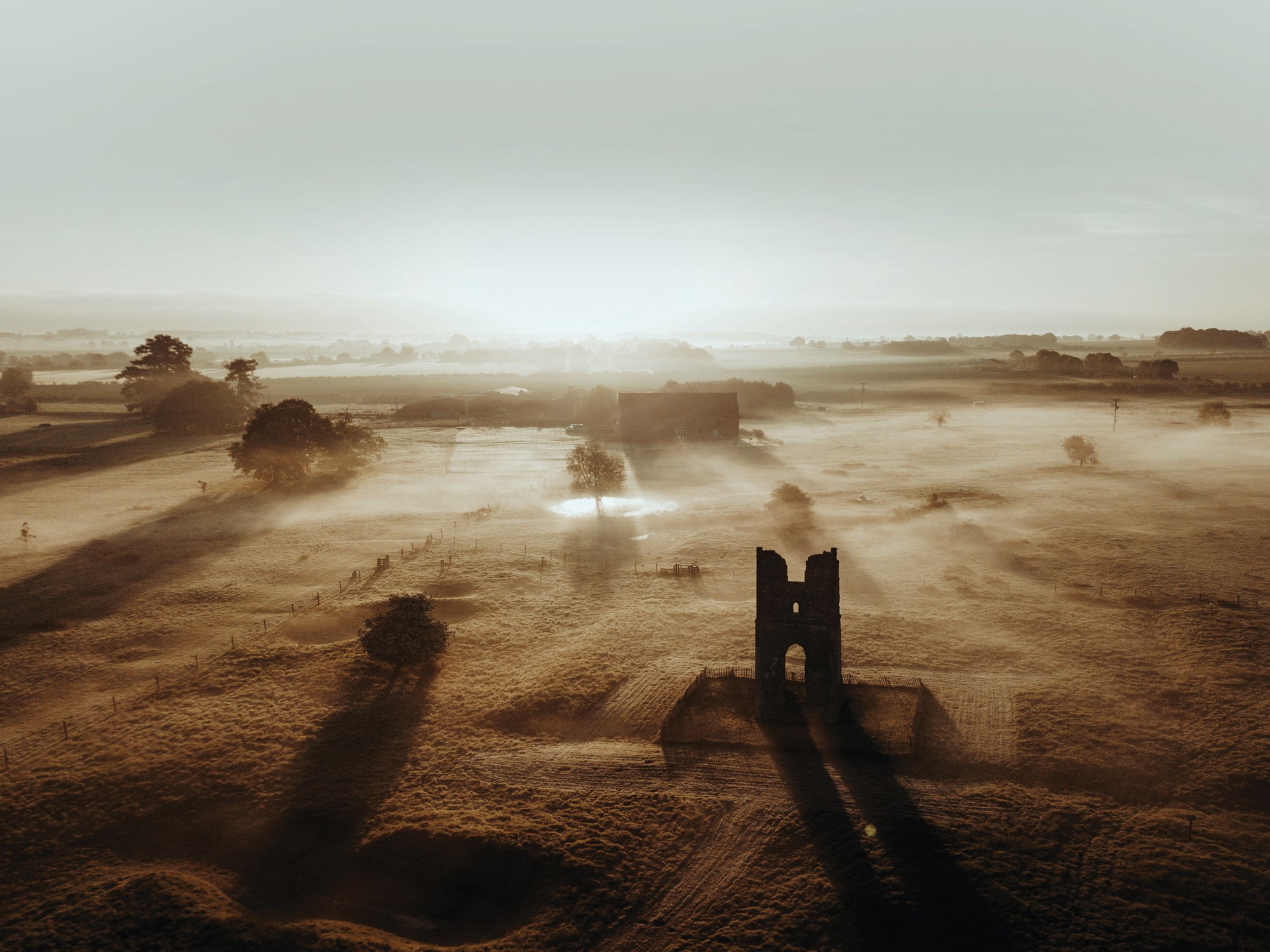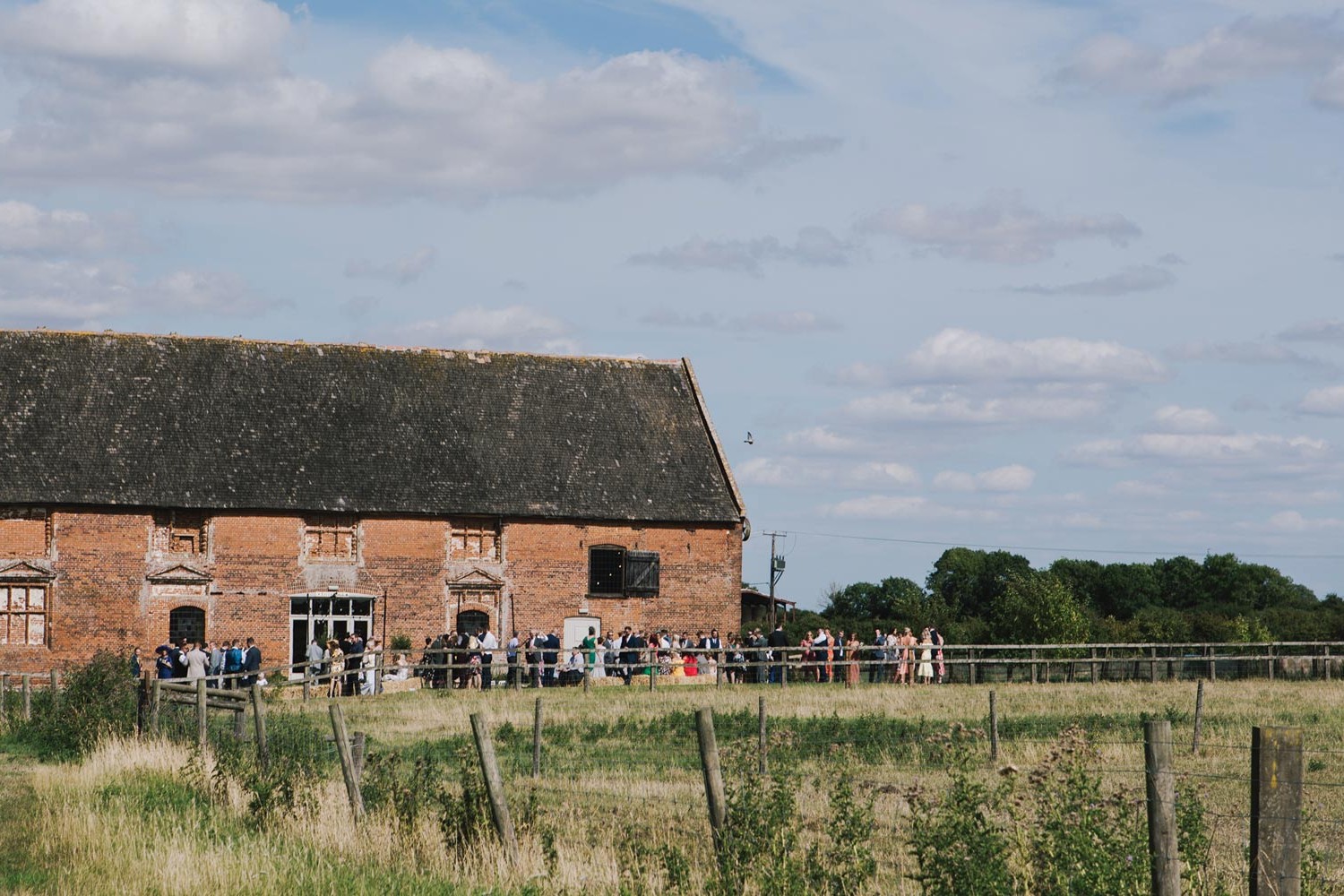
A new story for a long-lost ancient village
The history of the vanished village of Godwick is etched into this peaceful pastureland south of Fakenham, and a new visitor’s trail is now focusing on the people who shaped it
Take a stroll around the site of the medieval village of Godwick and you’ll certainly enjoy fresh air and lovely views: but if you’re not an expert on medieval history you might not appreciate the full significance of the depressions in the ground, of the location of the Great Barn and the church tower.
The Garner family have lived at Godwick Hall, Godwick farm and the site of the medieval village since 1928, and now James Garner has been the moving spirit behind the creation of a new visitor’s trail, accompanied by six interpretation boards. The boards were mainly funded by the LEADER project (it’s a French acronym standing for (Liaison Entre Actions de Développement de l’Économie Rurale) and were created by landscape archaeologist David Robertson: the content has also been used for a new website.
“David understood my vision for the project perfectly,” says James. “I wanted to create a trail around the site that gave people a better understanding of not just the archaeology but also the personalities that impacted the landscape and made it what it is today. Because what we see today - the barn and the tower - is largely what was left from the early 1600s as a result of one man’s visionary ideas.”
At its peak the village of Godwick had 16 taxpayers/householders, who worked the land and paid rent to the feudal lord. The land was divided into areas called tofts and the boundaries of these can still be made out, as well as what seem to be ditches but are in fact the remains of roads to nearby Tittleshall, Mileham, and another lost village called Sutton. The interpretation boards make these easy to spot, as well as the marl pits that villagers would have dug to fertilise the land. But the population dwindled: perhaps because of a long run of rainy winters and heavy clay soils that made farming difficult.
Sir Edward Coke bought the estate in 1590 and began making drastic changes. He was born in Mileham and was renowned as one of the greatest lawmakers of the Elizabethan era. He’s credited with reviving interest in the Magna Carta and coining the phrase “an Englishman’s home is his castle.”

He was also the founder of the Coke dynasty who would build Holkham Hall. When he bought the estate at Godwick it had a large three-storey Elizabethan house, and he built the Great Barn in a similar style.
He was married to a daughter of another great Norfolk family, the Pastons, who had built a similar status symbol - and it’s likely he wanted to compete with them. He also rebuilt the church tower as a folly, to establish a landscape park – an early adopter of another rich man’s hobby. He also built the barn across the main road through the village.
“That was a pretty good signal to the few remaining villagers that now might be a good time to move on!” says James.
It’s hard to imagine the awe this magnificent building must have inspired in the villagers watching it being built, with its lavish and ornate decoration.
Today the barn is a beautiful wedding venue, run by James and his team.
“We did extensive building work on the barn in 2012 and launched the business the following year. Now we host between 40 to 50 weddings a year,” says James. “It’s great to share this lovely spot with couples and their guests, and the lost village makes it an unusual venue, giving the guests something slightly different to do. My family have always viewed ourselves as custodians of Godwick, preserving it for the future.”
James’ father cleared away the remains of the Old Hall in 1961 after it was gutted by fire in the 1830s and replaced by the current Godwick Hall. And now James is overseeing essential repairs to the church tower, funded by Historic England, the Garner family, and the Heritage Lottery Fund.
“It’s a fascinating structure,” says James. “As it’s a scheduled ancient monument the ground around it has never been cultivated, and it’s been left as pastureland for hundreds of years. That’s why it has such a distinctive look - you can see all the humps and hollows.”
Half the walls crumbled in a huge storm in 1981 and ever since the tower has been open to the elements.
The lost village will remain open during the repairs, and James loves to welcome visitors.
“We get lots of history buffs, tourists on walking holidays, and also lots of regular local visitors,” he says. “It’s a peaceful place for a stroll; the soft sound of sheep baaing in the background, a touch of being close to nature as well.”
If you’d like to visit this fascinating site for yourself, you can find out more at www.lostvillageofgodwick.co.uk. Entry to the site is free and there is a visitor car park. James is available for private guided tours around the lost village including a chance of see inside the barn and have a cup of tea or coffee. It costs £10 each for a minimum of four people. Please get in touch via the website to organise. Dogs are welcome but must be kept on a lead at all times. The site is open to visitors every day from dawn to dusk except Wednesday (when it’s closed) and Saturday when it’s open from dawn to midday.
